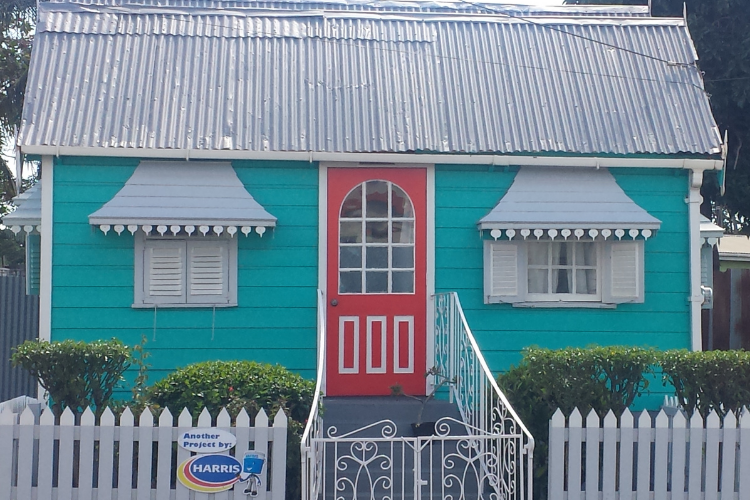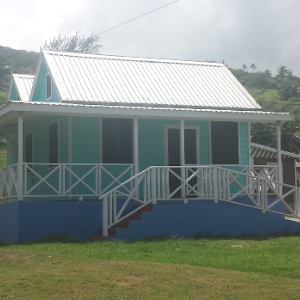Have you every wondered about the origins of chattel house fretwork? What was the purpose of adding this decorative wooden trim to houses?
In modern architectural designs that use elements of historic Caribbean architecture, fretwork is a charming decorative feature. However, in the days when chattel houses were the main housing solution for determined homeowners, fretwork served a functional purpose. Frequently used around windows, doors and the eaves of the roof, fretwork provided shade from the sun and relief from the rain. It also added character to the home, and was a showcase of the handiwork of talented, hardworking artisans.
Fretwork is popular in the Caribbean and in other countries and is known by several other names. Gingerbread, latticework, filigree, reticulation or even wooden trim are used to describe these decorative wooden designs that can alter the curb appeal of any home. Traditionally made of wood, this ornamental work of art was wood-carved by hand. However, modern day fretwork is made from wood, metals, acrylics and PVC, whereby designs are created by complex machinery.
History of Chattel House Fretwork
The history of chattel house fretwork can be traced back to the Caribbean islands’ seventeenth century exploits. Many of the Caribbean countries have elaborate backgrounds based on exciting stories of settlements by English, French, Spanish and Dutch explorers. These settlements often contained fierce fights for territories, with the strongest and most relentless explorers winning the battles. This meant that when islands in the Caribbean were developed, buildings, homes and other infrastructure mimicked that of the country, which controlled the islands.
A perfect example of this is Barbados’ architecture. Plantation houses and chattel houses reflect the architecture of the time in which they were built. The Jacobean era which spanned 1603 to 1625, was a period that used designs from early English architecture, France, Greece and Rome. St. Nicholas Abbey and Drax Hall, two of the oldest homes in Barbados are plantation houses built using the Jacobean style architecture.
Other historic houses in Barbados with “tropical Gothik” and “fretwork ornamentation” are reminiscent of the 19th and 20th century Palladium-cum-Regency style. Chattel houses adornments reflect this period with their fretwork details and hand-carved wooden tracery. Some chattel houses also feature Palladiam porticos with wooden columns and ballustrades and hooded windows with handcrafted jalousie windows and shutters. At that time, these designs were create with a scroll saw, hence these craftsman works of art took several hours to create.
Modern Day Fretwork and Gingerbread
As mentioned earlier, modern fretwork designs are created by machines. However, another dimension of creativity is required. Artists refer to photographs of ancient fretwork designs and create sketches either by hand on through digital programmes such as AutoCAD, Revit, Adobe Photoshop and Gimp. Machines can easily replicate the precision of the old fretwork artisans. Sadly, many of the old talents have died and not many people are willing to take on the concentration and dedication required to create fretwork by hand.
These days, fretwork used for decoration is seen on porches, roof eaves, doors and windows. Brackets, braces, arches, balusters, spandrels, grilles and trim are popular in exterior décor. These decorative gingerbread features are also popular in interior design and interior décor. Examples include wall panels, decorative boxes, interior trim and transom windows. However, wherever it is used, fretwork must be a tasteful addition to modern architecture and should complement the style of the home. Somehow, chattel houses achieved this and carried their fretwork designs with pride. As a result, they are stunning authentic characteristics of Caribbean architecture.
References
Historic Houses of Barbados (Henry Fraser)
Barbados: British Empire in Miniature (Graham Norton)
Things That Matter: Architecture in a Historical Context (The Barbados Advocate)
Technology Brings Back a Beloved Caribbean Architectural Detail (Maco)





